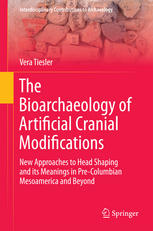

Most ebook files are in PDF format, so you can easily read them using various software such as Foxit Reader or directly on the Google Chrome browser.
Some ebook files are released by publishers in other formats such as .awz, .mobi, .epub, .fb2, etc. You may need to install specific software to read these formats on mobile/PC, such as Calibre.
Please read the tutorial at this link: https://ebookbell.com/faq
We offer FREE conversion to the popular formats you request; however, this may take some time. Therefore, right after payment, please email us, and we will try to provide the service as quickly as possible.
For some exceptional file formats or broken links (if any), please refrain from opening any disputes. Instead, email us first, and we will try to assist within a maximum of 6 hours.
EbookBell Team

4.0
56 reviewsThe artificial shaping of the skull vault of infants expresses fundamental aspects of crafted beauty, of identity, status and gender in a way no other body practice does. Combining different sources of information, this volume contributes new interpretations on Mesoamerican head shaping traditions. Here, the head with its outer insignia was commonly used as a metaphor for designating the “self” and personhood and, as part of the body, served as a model for the indigenous universe. Analogously, the outer “looks” of the head and its anatomical constituents epitomized deeply embedded worldviews and longstanding traditions. It is in this sense that this book explores both the quotidian roles and long-standing ideological connotations of cultural head modifications in Mesoamerica and beyond, setting new standards in the discussion of the scope, caveats, and future directions involved in this study. The systematic examination of Mesoamerican skeletal series fosters an explained review of indigenous cultural history through the lens of emblematic head models with their nuanced undercurrents of religious identity and ethnicity, social organization and dynamic cultural shift. The embodied expressions of change are explored in different geocultural settings and epochs, being most visible in the centuries surrounding the Maya collapse and following the cultural clash implied by the European conquest. These glimpses on the Mesoamerican past through head practices are novel, as is the general treatment of methodology and theoretical frames. Although it is anchored in physical anthropology and archaeology (specifically bioarchaeology), this volume also integrates knowledge derived from anatomy and human physiology, historical and iconographic sources, linguistics (polisemia) and ethnography. The scope of this work is rounded up by the transcription and interpretation of the many colonial eye witness accounts on indigenous head treatments in Mesoamerica and beyond.